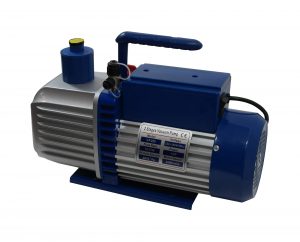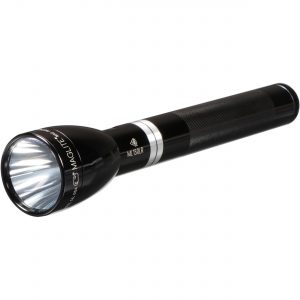
Every established technician and aspiring HVAC professional needs to have a variety of tools in order to successfully conduct their day-to-day operations.
In this article, we want to provide you with a comprehensive list of HVAC tools you should make sure you have available whenever needed. As each job will require you to use a specific toolset, we went ahead and compiled them under a few categories.
1. Sheet metal HVAC Tools
Awl

For our first sheet metal HVAC tool, we have the good ol’ awl. Even though we put it here, the awl can be used on a variety of materials, not just metal.
It also works for making incisions in fabric, wood, drywall, etc., so it’s a handy tool to have at hand.
Hand seamer

Working with metal can get rough, so it’s important to have as much protection for your hands as possible. That’s where hand seamers come in handy.
They are handheld tools that help bend or flatten sheet metal to a desired shape, without having to use your hands directly.
Crimper

These aren’t used only in HVAC, but also generally where cables are involved.
Crimpers help conjoin two cables or ducts into one, which stands for a crimp.
As a side note, always make sure you use two blades on the outside, or three if you want a gentler slope on the crimp.
Tin snips and shears

Straight cut, left cut and right cut. Either one or all of them, they’re necessary for technicians in order to cut the metal and sheet metal to their liking.
Staple gun

Whether for wood or for sheet metal, staple guns provide a quick and sure way of fastening ducts and certain material to the ducts.
A technician needs to always have at hand a staple gun to secure various materials, such as the duct wrap.
2. HVAC Field Service Management Software
As professionals also need a way to centralize all their work and jobs, a proper field service management software that fits their needs is mandatory.
Software such as FieldVibe lets you:
- Easily schedule and assign jobs
- Have all your field service jobs in one place
- Have all your service company client details in one place
- View real-time field staff status and location
- Automatically remind your clients about their appointments
- Get powerful activity and revenue reports for your field service business
- Use your Business Manager account to add as many staff accounts as you need
Everything conveniently available at your fingertips through your mobile device.
3. Technical & Specialty HVAC Tools
Vacuum Pump

Removing moisture from the different conditioning lines is a pain. Doing it without a vacuum pump is even more painful.
That’s why we recommend you pull the lines into a vacuum and test them for leaks before charging the system with refrigerant.
Do not pull everything into the compressor, as you’ll just end up having to replace the seals in no time.
Use a vacuum pump instead.
Thermal image camera

This device is extremely important for technicians because it helps them diagnose hidden heating or refrigeration problems.
It also provides them with more information on the temperature of the system which can be invaluable, because they get to know if it properly fits under normal parameters.
Thermometer

In case you don’t have available a thermal image camera, or it isn’t the right fit for diagnosing the system your servicing, a thermometer might just be enough to get the job done.
Caulking gun

Sealing ducts has never been easier with caulking guns.
Gone are the days when you had to have extra steady hands to maneuver the caulking cylinder while applying force to get the caulk out.
Make sure you get a dripless caulking gun in order to keep things as neat and tidy as you can.
Leak detector

Speaking of drips, leak detectors provide the necessary insight when it comes to finding out problematic areas where moisture is probably going to concentrate.
You can also try to do it the old fashioned way and look for leaks with your own eyes, but the leak detector can make everything easier for you.
Cordless drill

Being tethered to an electrical outlet can be a pain, especially if you need to use a hand power tool.
Investing in a cordless drill is like finally being unshackled (maybe even literally).
Extension cord

For those moments when cordless equipment runs out of battery (we hope you packed some extra batteries though), you can’t go wrong with an extension cord.
The extension cord is especially useful when out in the field, where outlets aren’t as close by as you need them.
Reciprocating saw

Also known as the sawzall (though a bit bigger), this tool is perfect for making cuts into sheet metal, drywall, attic insulation, you name it.
You should keep in mind that it can quickly overheat, so make sure to use adequate speed on the saw for each material.
Manifold Gauge

A staple for air conditioning systems, the manifold gauge lets you diagnose pressure and determine the location of leaks.
Accuracy depends on the type of the gauge, analog or digital. The analog gauge is a tried and tested instrument, but some say that the digital one is much more accurate.
Psychrometer

This device helps technicians measure relative humidity and also lets you pinpoint the air flow and air mixtures.
This one is less needed on a daily basis, but you might save you lots of time on specific, giving you accurate temperature readings, which can be critical.
4. Handy HVAC Tools
Refrigerant scale

The refrigerant scale measures the amount of refrigerant in a unit’s compressor.
This is useful when adding refrigerant to an air conditioning system, as a specific amount or threshold needs to be met in order to effectively maintain the temperature in the designated space.
Crescent wrenches

Small, medium and large wrenches will help you tackle any issue in your day-to-day work.
These are invaluable and useful HVAC tools that should be in the toolset of every technician.
Headlight or flashlight

It’s hard seeing in the dark without having a trusty flashlight or headlight on you.
Depending on the type of job or the location you need to work in, some sort of artificial light can be absolutely necessary.
Pry bar

When forced to move heavy objects, a pry bar can make the difference between being stuck at the job or having another happy customer.
A pry bar literally leverages you to a job well done.
Hammer

The good old trusty hammer.
A carpenter-style works best, and it’s not that heavy to bog you down while working.
Tape measure

Another self-explanatory tool, the tape measure is an invaluable asset to every technician’s tool belt.
Make sure you get one that’s magnetic and has a long standout.
Screwdrivers, Pipe Wrenches and Pliers

These are on par with the hammer and the tape measure, as they are a must for every technician’s tool belt.
Flushing solvent

This handy solution lets you flush out old air conditioning refrigerants and contaminants when charging a new refrigerant.
Just make sure it’s compatible with old mineral oil and with the new lubricants as well as with the old and new refrigerants.
5. Safety HVAC Tools
Multimeter and Voltage tester

Since HVAC systems are linked to the electrical system, as a technician you should have available a multimeter and voltage tester to help you measure voltage, resistance and other electrical tests.
This is important not only while conducting your own work, but also for the safety of the client.
Gloves

These don’t apply only for not getting cuts and bruises on your hands, but also to make sure you don’t get shocked while connecting the system to the electrical side.
Ear plugs

As you’re going to use power tools on a fairly regular basis, make sure to use ear plugs, because consistent use of power tools can quickly damage your hearing.
Safety goggles

Debris can easily jump in your eyes while working.
Power tools easily create debris that can cause debilitating damage if it reaches your eyes, so make sure you add a pair of goggles to your toolbelt.
Proper footwear

Same as with the safety goggles, a good pair of shoes can make the difference between getting home with feet aches or happily-whistling your way back home.
So, make sure you invest in good footwear.
More to this, see what benefits a job scheduling app like FieldVibe can bring you at this link.